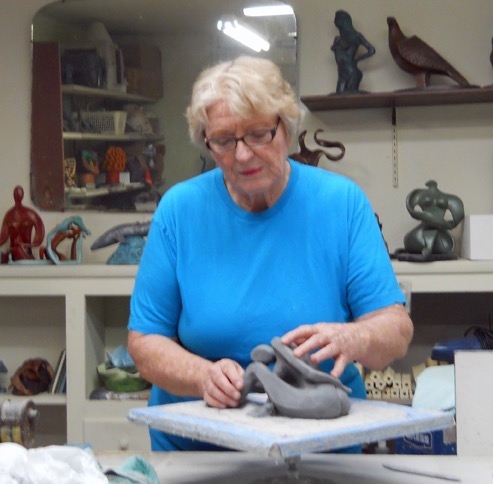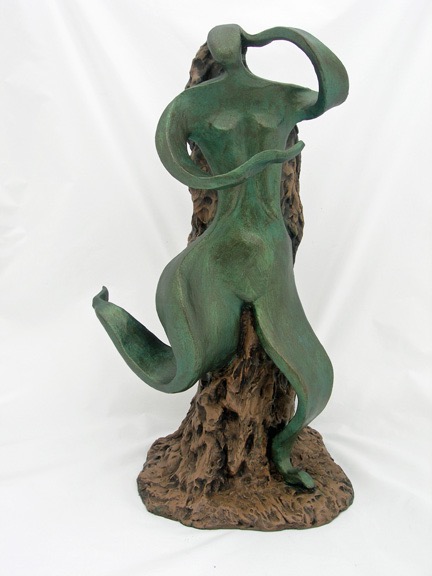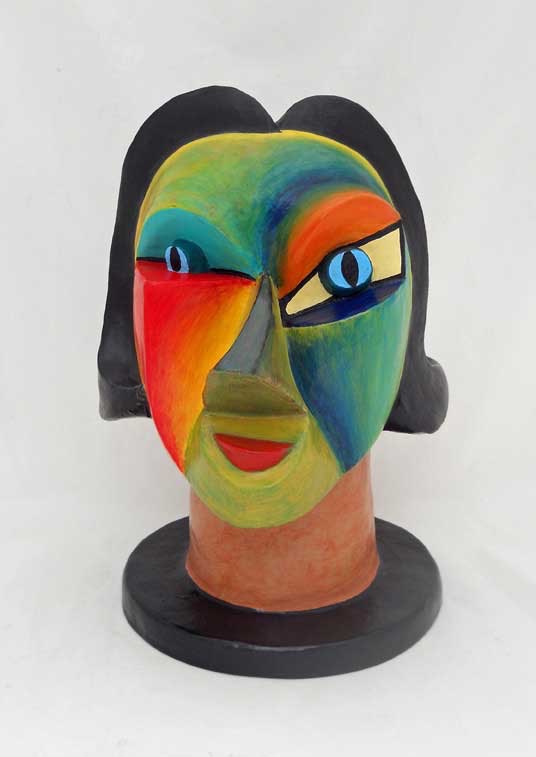Contact information: claysculptorgal@gmail.com currently lives and works in Hermosa Beach, CA To send an email, go the end of this page.
ARTIST'S STATEMENT
Movement and flow are the words that best describe the sculptures I create. A line often moves, with no seeming beginning or end, connecting one part to another. Sometimes the movement is strong and straight, sometimes gentle and flowing. Living near the ocean all my life, I have always drawn inspiration from my surroundings. This, combined with a great respect for the human form and its beauty, have been strong influences in my ever developing style. When I work, I feel a connection with the clay -- it leads me where I want to go, even though in the beginning I may not know the destination. If I listen well, the piece finds its direction.

BIOGRAPHY
Born in Buffalo New York, Edie's family moved to Santa Monica CA, when she was just a baby. She has loved working with clay since childhood. Her early art education was at Santa Monica College, where her focus was on ceramics. As she took classes, she worked part time as a lab assistant in the ceramics department. Later, she worked as a ceramic decorator, in a lamp factory on Main Street in Ocean Park. During her child rearing years she continued to take classes and work from her home studio. After moving to Hermosa Beach, CA, she studied sculpture for four years, with Annette Morse, fulfilling a longtime ambition. Edie feels she has found her true passion in sculpture, and hopes to continue to grow and evolve as an artist as long as she lives. She has been sculpting since 1978, and showing her work professionally since 1982.

I use two different processes in my work:
HAND BUILDING This is the original method I learned back in 1978. The technique involves pressing, or "wedging" pieces of clay together, slowly building a solid form. The piece is then sculpted, modeled, and added to, until the desired form is achieved. When the correct firmness is reached, the sculpture is then cut apart, and hollowed out. One must be careful when doing this to keep the walls an even thickness. The hollowing out is to avoid air pockets, which could cause the piece to blow up during firing. Next, the work has to be put back together. The cut edges are scored, and liquid clay (slip) added. The piece is pressed, and smoothed carefully back together. The work is then dried and fired. I use a "cold" finish on all my work. This is done with a combination of acrylic paint, wax, metallic wax, and sometimes an oil base antiquing wash.

SLAB BUILDING The slab method is common in ceramics, often used for bowls, platters, decorative boxes and such. The clay is rolled out much like a pie crust. This is how I begin my FLOWING FIGURES. These are all made from a product called paper clay. This is a mixture of clay and paper fibers. From the slab, I cut out a flat figure. Then I bend, press, and shape the clay into the pose I envision. I usually have to prop up certain parts until the right firmness is reached. The piece can then be sculpted, shaped, smoothed and finished. The paper fibers in this clay give it great strength. It allows me execute poses impossible with regular clay. Paper clay can be dried much quicker than regular clay, and with less shrinkage. Being thin, these sculptures can also be fired much faster. The finish is achieved with acrylic paint, and metallic wax. All in all, this method has allowed me much more freedom of expression.
Flowing Figure #79

Iris
To e-mail, complete form below.
